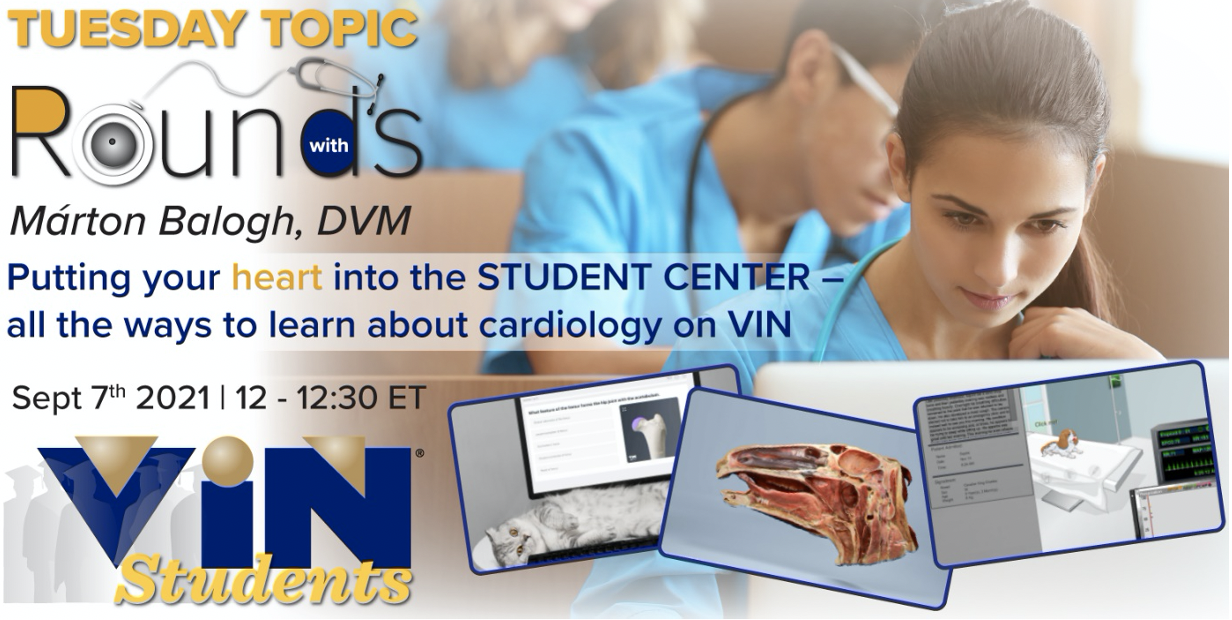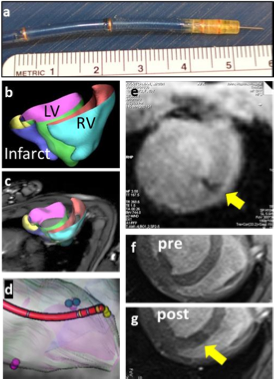VIN Topic Rounds
 Monday, September 6, 2021 at 01:00PM
Monday, September 6, 2021 at 01:00PM

Are you missing out on clinical rotations because of COVID-19? The VIN Student Team has you covered with Tuesday Topic Rounds. During the month of September, join the VIN Student Team for 30 minute, case-based sessions that illustrate how to use the tools on VIN every Tuesday at 12pm ET. Everyone and all levels of experience are welcome. There will be time for Q&A and discussion following. The next session is Putting Your Heart into the Student Center: All the Ways to Learn About Cardiology on VIN on September 7, 2021 at 12 ET.
In this rounds:
- How to use VIN’s resources from the starting notion of ‘I want to learn more about cardiology’ to the anatomy of the heart and simulation of heart disease.
- 3D anatomy tools
- Flashcards on the Student Center
- VIN Virtual Clinic
- VIN resources such as search, VINcyclopedia, and Bolton's Handbook of Canine and Feline Electrocardiography, Cardiac Auscultation and Phonocardiography
TO JOIN THE SESSION, LOG INTO THE VIN STUDENT CENTER AND CLICK THE GREEN BUTTON IN THE TOP RIGHT
The Veterinary Information Network (VIN) is here to help you as a vet student – especially during this worldwide pandemic. Membership is always free as a student!
 VIN,
VIN,  cardiology,
cardiology,  rounds in
rounds in  News,
News,  VIN Topic Rounds
VIN Topic Rounds 
